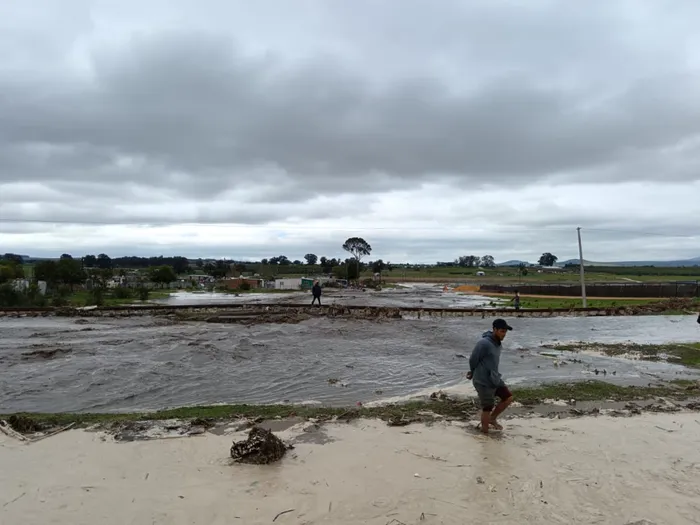Building business resilience: How South African companies can weather climate risks
INSURANCE

Already this year, South Africa has experienced disastrous flash floods, runaway wildfires, and a landspout event that was originally reported as a tornado.
Image: Gift of the Givers.
As climate change accelerates, South African businesses face growing risks from extreme weather events such as floods, droughts, and wildfires, which can lead to financial losses, supply chain disruptions, and operational shutdowns.
The World Economic Forum warned that businesses that fail to address climate risks could lose up to 7% of their earnings by 2035.
Jason Mellow, Head of Broker Distribution at Miway, says that additionally many businesses remain underinsured, leaving them vulnerable to significant financial strain when disaster strikes.
“Already this year, South Africa has experienced disastrous flash floods, runaway wildfires, and a landspout event that was originally reported as a tornado,” Mellow said.
Mellow outlined six steps that businesses can take to build climate resilience into their operations and minimise financial losses.
1. Conduct a comprehensive risk assessment
A climate risk assessment is a systematic approach to identifying a company’s operational vulnerabilities to the impact of both extreme weather events as well as gradual changes due to climate change. Understanding threats can inform long-term planning and strategic investments in infrastructure and insurance coverage. The assessment should consider the full scope of the business, its geography, historical climate information, and must identify potential adaptive measures like infrastructure upgrades, policy changes, or behavioral modifications.
“It’s become clear that the sustainable development of businesses rests on the intersection of climate science and risk management,” Mellow said.
2. Develop or update disaster preparedness plans
A reliance on reactive measures in both public and private sectors is evident by the climate-related destruction to infrastructure and the resultant operational disruptions and financial losses reported recently. In the North West province, 27 schools were rendered either inaccessible or severely damaged by the continuous heavy rains in February. In 2022, KwaZulu-Natal (KZN) experienced the deadliest storm in the country since 1987 with heavy rainfall and floods accounting for more than R17 billion in damages to critical infrastructure.
A disaster preparedness plan is a set of measures documented in advance to mitigate the potential damage and disruption to operations before the disasters occur.
3. Invest in resilient infrastructure
Poor planning and maintenance were identified as major contributors to the collapse of critical infrastructure in several provinces.
The KZN floods, for example, revealed infrastructure that was not built or reinforced to adapt to changing weather patterns. Insurance claims that arose during that time in industries like construction stemmed from defective designs, poor planning, and inadequate maintenance. “Businesses should prioritise climate-resilient construction, such as reinforced drainage systems, elevated structures, and improved building materials that can withstand extreme conditions,” Mellow added.
4. Be adequately insured
“A climate risk assessment together with a comprehensive review of a company’s insurance policies can help identify and address gaps in protection,” explains Mellow.
“Whether it’s business interruption, or damage to your physical property, unforeseen events do not have to put you out of business if you insure your assets against the very real risk of climate-related damages.
“We offer optional add on solutions like Environmental Transport Liability Cover, for example, that are specifically designed to cover the environmental impairment risks of transporting hazardous substances,” he adds. “It’s worth exploring the different options available from your insurer, based on your risk.”
5. Stay informed about potential risks
Monitoring weather alerts and climate reports help businesses anticipate risks and act swiftly. The South African Weather Service provides real-time warnings on storms, floods, and heatwaves, enabling proactive decision-making. Establishing internal communication channels for rapid response ensures employees and stakeholders remain informed, minimising disruption and enhancing overall preparedness for extreme weather events and climate-related disasters.
6. Practise sustainability
To ensure long-term competitiveness in a changing climate, Mellow urges businesses to explore renewable energy sources, eco-friendly supply chains, and carbon footprint reduction strategies.
“Climate change is a growing reality, and businesses must take responsibility – not only for mitigating risk but for contributing to a sustainable future. At Miway, we’re committed to both,” he further said.
BUSINESS REPORT